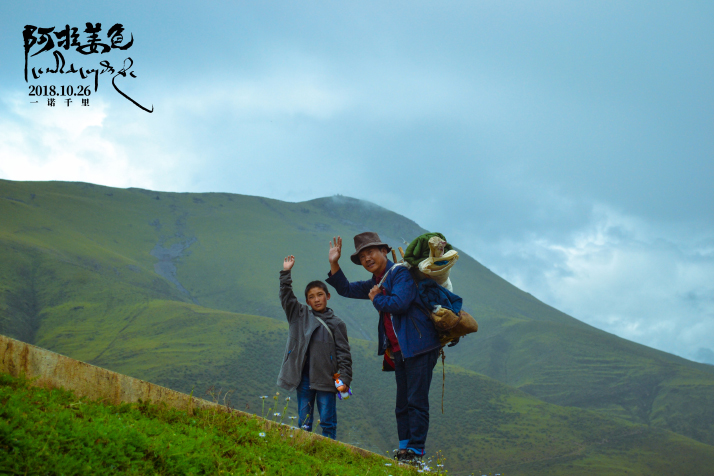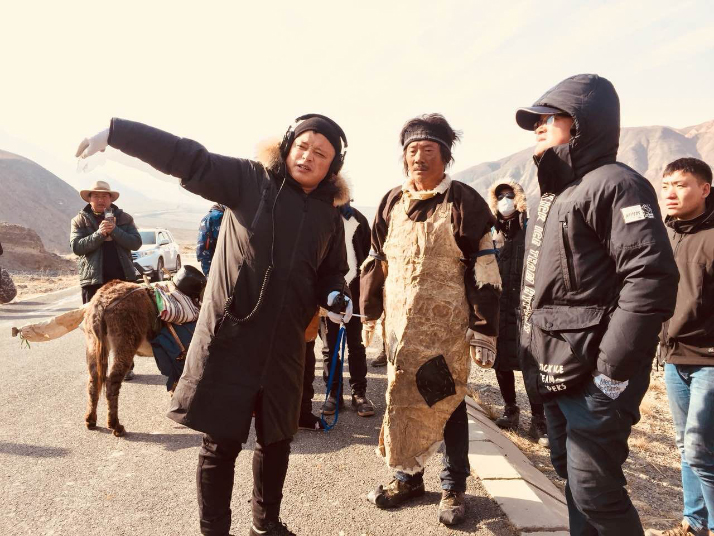| Lifestyle |
| A Toast to Life | |
| Film on ordinary Tibetan lives and sorrows creates a buzz | |
|
|
 Poster of Ala Changso (FILE)
On October 26, a movie telling a story about ordinary people in southwest China's Tibet Autonomous Region was on show throughout China. Sonthar Gyal, the Tibetan film director, created waves at the 21st Shanghai International Film Festival in June with his entry Ala Changso winning the jury grand prix and best screenplay awards.
"The areas where Tibetan ethnic groups live have beautiful natural scenery. But for me, who grew up there, I didn't think the place to be mystical. Rather, I think what forms Tibetan culture is the people. We should care more about ordinary Tibetan people's emotions and lives," Sonthar Gyal told Beijing Review. In contrast to traditional movies on Tibet, which display dazzlingly beautiful natural vistas such as snowy mountains, grasslands and lakes, as well as Tibetan architecture and local culture stereotypes, Ala Changso revolves round the characters' psychology and emotions. The director deliberately chose cloudy days to shoot his film in order to minimalize the natural environment. "The film is on serious topics, life and death. But we don't want them to be the theme. So we used this title to give it warmth and hope," said Liao Xi, producer of the film. The director said the inspiration for the film came from a story told to him over dinner by his friend, singer Yungdrung Gyal, who plays a major role in the movie. One of Yungdrung Gyal's primary schoolteachers quit his job and became a lama, a Buddhist monk. He set off on a pilgrimage to Lhasa, capital city of the autonomous region, on foot from his hometown in the Aba Tibetan and Qiang Autonomous Prefecture in southwest China's Sichuan Province. He was accompanied only by a donkey he had bought to carry his food and other necessities. When he completed the 2,000-km journey three years later, the donkey had grown old. He wondered how he could return home. If he walked back home with the donkey, it would take too long; but he didn't have enough money to hire a vehicle to take the animal home. In the end, he gave the donkey to somebody in Lhasa and hitched a free ride home. Although he never saw the animal again, he found he had formed a strong emotional bond with it. Sonthar Gyal, who had learned to paint before he made films, said he has the habit of developing a story from a picture. When working on the Ala Changso script, he imagined a scene where a man would find his wife had been secretly keeping her first husband's ashes and a photo taken with him. "What would be the man's reaction?" he wondered.  Sonthar Gyal (left) and Yungdrung Gyal (center) on the shooting set of Ala Changso (COURTESY PHOTO)
He combined the scene with the story told by his friend to form the plot of the film that is now being hailed as a breakthrough work. Except for Nyima Sungsung, who plays Drolma, the other two leading characters, the father and son, are both portrayed by amateurs. The director said he has to cast nonprofessional actors in his films because he has few choices. There are few Tibetans who are professionally trained in the performing arts. It meant he had to show the two actors what he wanted them to do and then they would imitate him. In the beginning, Yungdrung Gyal was apprehensive that he might not be able to cry when the scene demanded tears. However, with the director's encouragement, he found himself crying naturally during the shooting. The director imagined his singer friend Yungdrung Gyal as the husband while writing the script and then offered the singer the role. At first, Yungdrung Gyal was worried that he might ruin the film since he had never acted before. However, he was persuaded by the director and became one of the producers of the film. He also cut off his long hair for the role. Sechok Gyal was chosen to play the son from several thousand children. They searched for the right child actor in primary schools with the director himself finally joining the search. Sechok Gyal was chosen because of his expressiveness. The boy has few lines in the film, primarily using his face to express his emotions. "Although the film reflects Tibetan lives, the themes of love, responsibility and promise are universal, transcending ethnicity and nationality. It is bound to strike a chord with the audience," Liao Xi said. Ala Changso had a 7-million-yuan ($1 million) budget. Liao said he didn't have any unrealistic expectations about its box-office performance as it was an art film. However, he believed that a good film would bring satisfactory returns. This is Sonthar Gyal's third film since his directorial debut in 2011. Coming from Qinghai Province in northwest China, Gyal was fascinated by films since childhood. When he saw his first film, he was a primary school student. He couldn't follow the story since the film was in Mandarin but nevertheless, he was enthralled. Later, when he went to junior middle school, he would often bunk school to watch movies in small cinemas. His love for art and literature continued in college where he learned to paint and wrote novels in Tibetan. He became a teacher after graduation but in 2004, decided to learn cinematography at the Beijing Film Academy for one year. Before becoming a full-fledged director, he was a cinematographer in several Tibet-themed films. Copyedited by Rebeca Toledo Comments to jijing@bjreview.com |
|
||||||||||||||||||||||||||||
|